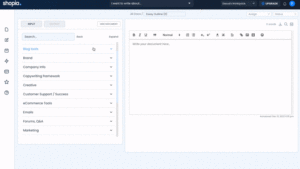When it comes to endings, you want to make sure that you leave your readers with something powerful that will stick with them long after they’ve finished reading your post. Here are eight great ways to do just that:
1. Using A Rhetorical Question
When it comes to writing blog posts, one of the most effective techniques you can use is the rhetorical question. A rhetorical question is a question that is asked for effect, rather than to elicit an answer. Rhetorical questions can be used to grab your reader’s attention, make a point, or end your post on a powerful note.
Here are a few examples of rhetorical questions you could use to end your post:
-What do you think?
-What are your thoughts?
-How do you feel?
-What are the implications of this?
-What are the takeaways?
-What are the takeaways for your readers?
-What should we do next?
2. Using A Statistic
Including a statistic in your blog post can help to back up your argument and make your point more convincingly. When selecting a statistic to use, make sure that it is relevant to your topic and that it is accurate. If you are unsure about the accuracy of a statistic, do your research before including it in your post.
Using statistics in your blog posts can be a great way to make your point more convincingly. When selecting a statistic to use, make sure that it is relevant to your topic and that it is accurate. If you are unsure about the accuracy of a statistic, do your research before including it in your post.
It’s important to be careful when using statistics in your blog posts, as not all of them are accurate. Make sure that the statistic you use is relevant to your topic and is accurate before including it in your post. Doing your research beforehand is the best way to ensure that your statistic is accurate.
3. Sharing a powerful quote
Quotes are a great way to add authority and credibility to your blog post. They can also be used to spark interest, provoke thought, and motivate your readers. When selecting a quote to include in your post, make sure it is relevant to your topic and provides valuable insight.
Here are a few tips for using quotes in your blog posts:
-Choose a quote that is meaningful and thought-provoking.
-Make sure the quote is properly attributed to the source.
-Include the quote in its entirety, or paraphrase it and include the author’s name.
-Explain the significance of the quote and how it relates to your post.
4. Using A Story
People often remember information more effectively when it is conveyed in the form of a story. If you want to leave a lasting impression on your readers, consider using a story to illustrate your main points. Not only will this help your readers remember what you said, but it will also help them to better understand your message.
5. Using An Analogy
If you’ve ever been lost, you know the importance of having a map. A map can help show you the way to your destination, no matter how unfamiliar the route may seem.
Analogies are like maps for your readers. They can help them understand complex concepts by comparing them to things they already know. When you use an analogy in your writing, you are giving your readers a tool to help them understand what you’re saying.
Analogies can also be fun and entertaining, which can help keep your readers engaged in your writing. So next time you’re stuck for a way to explain a complex idea, try using an analogy. It may just be the thing that helps your readers understand what you’re trying to say.
6. The Cliffhanger
Do you like cliffhangers? I certainly do. In fact, I love them. They keep me on the edge of my seat, waiting to find out what happens next.
Cliffhangers are a great way to end a blog post because they leave your readers wanting more. They make them curious about what you’ll say in your next post.
So, if you’re looking for a way to leave your readers wanting more, consider using a cliffhanger to end your post.
8. Call your readers to action.
If you’ve been following along, you now know a lot of great ways to end your blog post. But there’s one final thing to remember: always call your readers to action.
What do you want your readers to do? What do you want them to feel? What do you want them to think?
Whatever it is, make sure to spell it out for them. Give them a clear and concise call to action that will leave them excited to take the next step.
So what are you waiting for? Start putting these tips into practice and see how your blog posts and readership grow!









